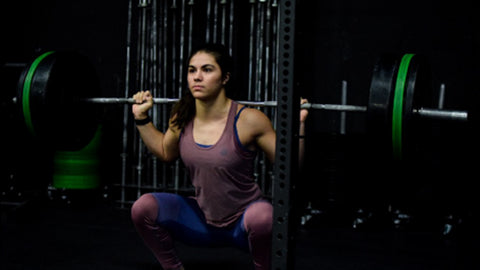
Strength & Conditioning For Snowboarding
We all know snowboarding comes with it’s fair share of falls, whether you’re a beginner, or you’re riding X-Games. The chances of injury don’t necessarily diminish as you improve your riding as you are likely taking more risks and doing progressively more challenging tricks. As much as you try to prevent things from happening, you’re not always going to land perfectly, and even when you do, there is a toll it takes on your body and joints over time.
Through strength & conditioning training, we can reduce the likelihood of injury in two ways:
-
By building a stronger body that can bounce back from hard crashes and absorb high impact landings.
-
By reducing the amount of crashes you have by improving your resistance to fatigue (think about how your likelihood of crashing goes up throughout the day or week as you get physically fatigued).
When we think snowboarding, we think legs. Yes, we want strong legs to absorb landings, however, it is important that we build total body strength as well. When you crash and land on your upper body, you’re going to be VERY thankful for having more muscle mass to protect your joints and keep everything in place. This is why it is recommended to focus on a General Physical Preparedness program that focuses on building strength through compound lifts (squats, pull ups...) and not just isolation exercises (leg extension, bicep curls etc.). Of course, single leg work is also important for stability, but we should first focus on the big compound movements to build strength, and the other movements can be used when needed for accessory strength work, to bring up weaknesses, or for stability work.
HINT: If you want to build the most strength with spending the least time in the gym, then compound movements should be your go to.
You know why no one calls last run? The “curse” of the last run is related to the fatigue you have at the end of the day. When your body is feeling beat down, and you’re physically and mentally tired, your chances of injury go through the roof. Imagine if you could help prevent or delay that...
Hint: You can.
We accomplish this through becoming fitter (more well conditioned). When many people think conditioning, they think about sitting on a cardio machine for 30 minutes. However, for snowboarders who often spend a lot of time active and doing other sports, we don’t need to focus as much on long slow endurance work. When snowboarding, you go hard, and then you rest (on the chairlift). You can improve your ability to handle going hard during your runs through interval training and metabolic conditioning.

Natalie crushing through spin intervals
Interval training often involves repeated bouts of high effort/power followed by specific rest times depending on which energy system we are trying to adapt. When you have good aerobic conditioning/endurance, a high power output, and the ability to repeat and recover from high intensity, you’re going to feel like you can get high quality runs in ALL DAY LONG. Your individual run performance will improve, as will the amount of runs you can get in during a day before you feel it’s time to call it quits. You have now both improved your performance, and decreased likelihood of injury.
Example Programming (Lower Body Focused Day):
Warm Up: Move through a total body flow that gets your body warmed up and feeling mobile. Strength: 3 x 10 Back Squats (build on reps or weight throughout weeks)
Accessory: 3 Sets: 10 Romanian Deadlifts, 10 Bulgarian Split Squats, 10 Lateral Lunges. Rest as needed throughout.
Conditioning: 3 rounds: 400m row, 10 Kettlebell Swings. 1 minute rest between rounds.
Cool Down: 8 minutes spinning on a bike, get off the bike every 2 minutes and do 10 air squats. Mobility: 2 min couch stretch / side, 1 min cobra stretch, 1 min seated hamstring stretch, 3 minute hold in a sumo squat.
*Actual workout taken out of Action Performance Training’s Program.

For those riders who don’t enjoy the gym, the above workout should get you in and out of the gym in 1 hour flat! Competitors should be spending 4-5 days in the gym during the off-season, and prioritizing recovery and strength maintenance during the season. For weekend warriors, 3 times a week should suffice, and it’s important to maintain your strength and movement patterns during the season with light workouts that don’t leave you too fatigued to ride.
If you’re interested in preventing injury and maximizing your time on the slopes, use code: SNOWADDICT to save 25% off your first month of workouts at www.actionperformancetraining.com
Want to progress your snowboard and get more training tips?
Natalie Allport
Head Coach at Action Performance Training
Former Canadian National Team Slopestyle Rider

